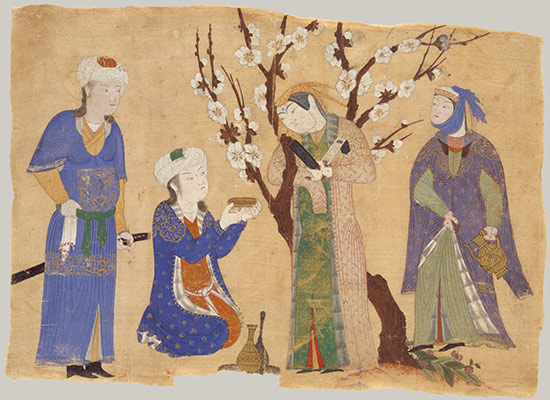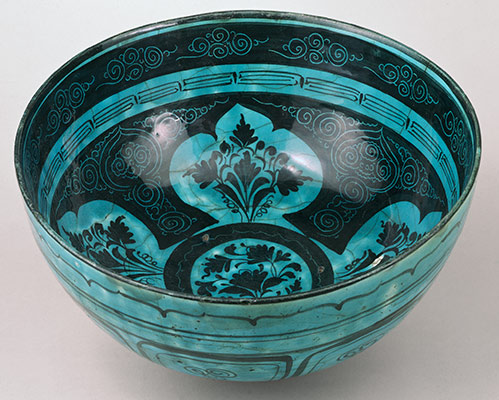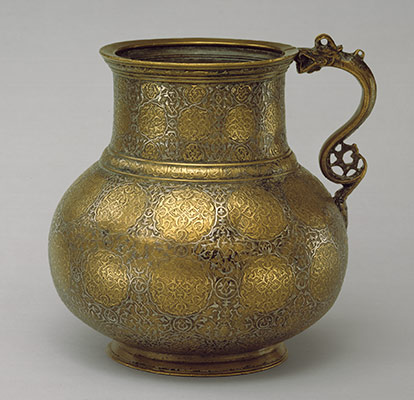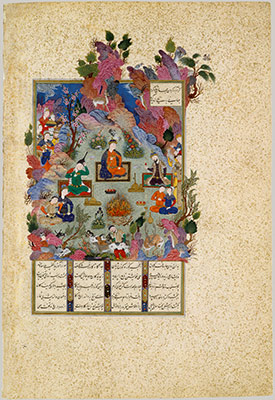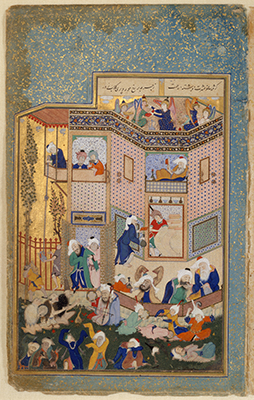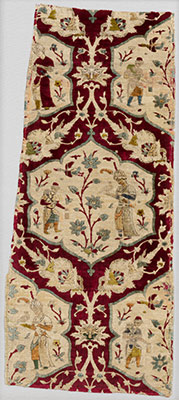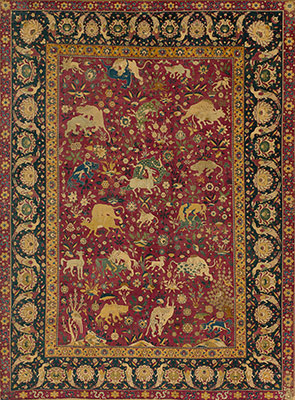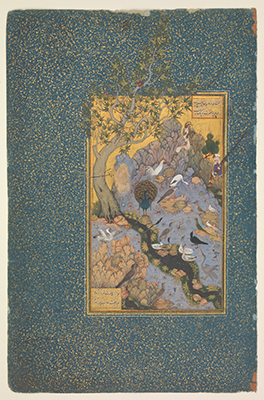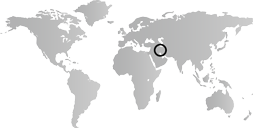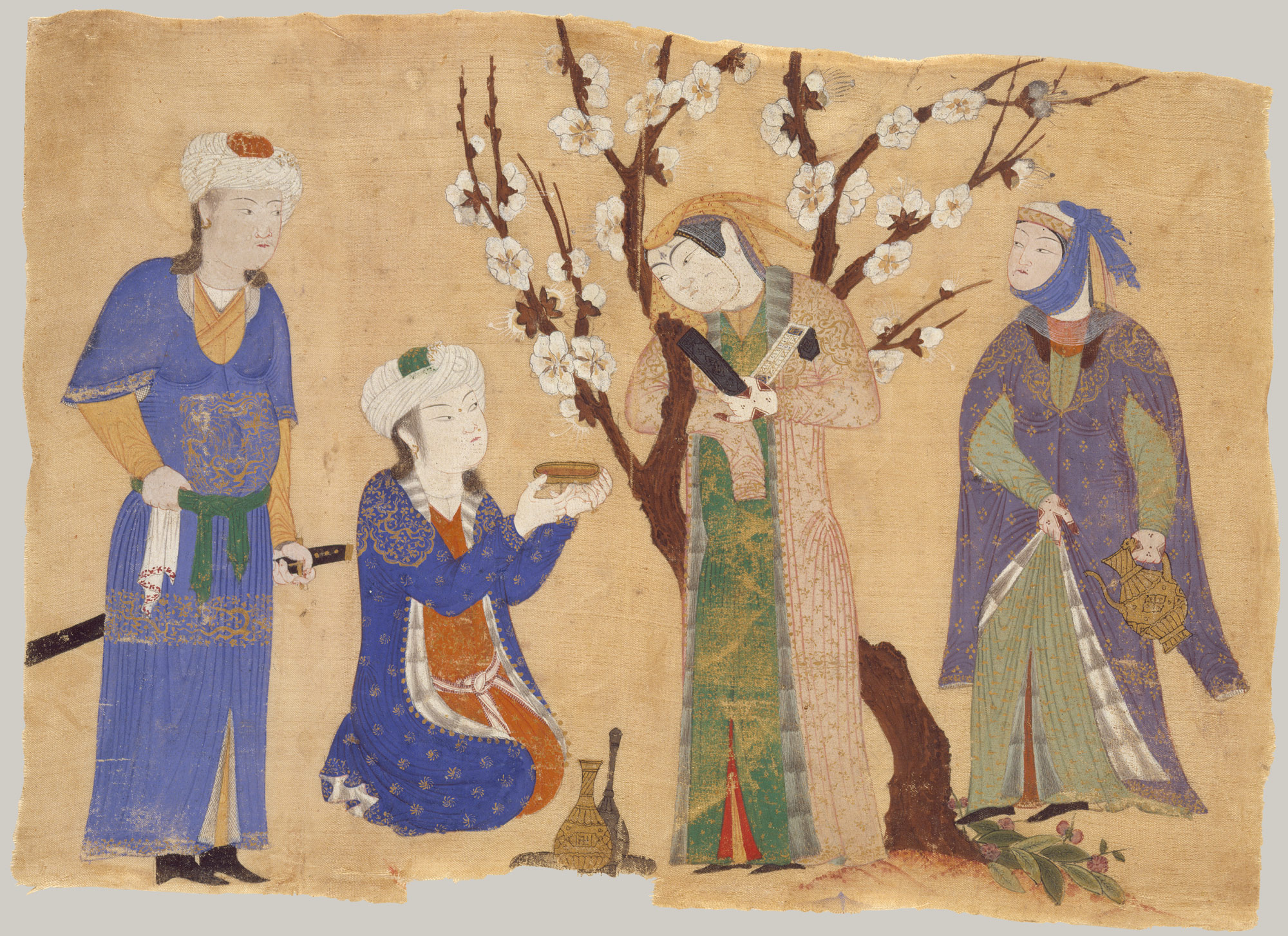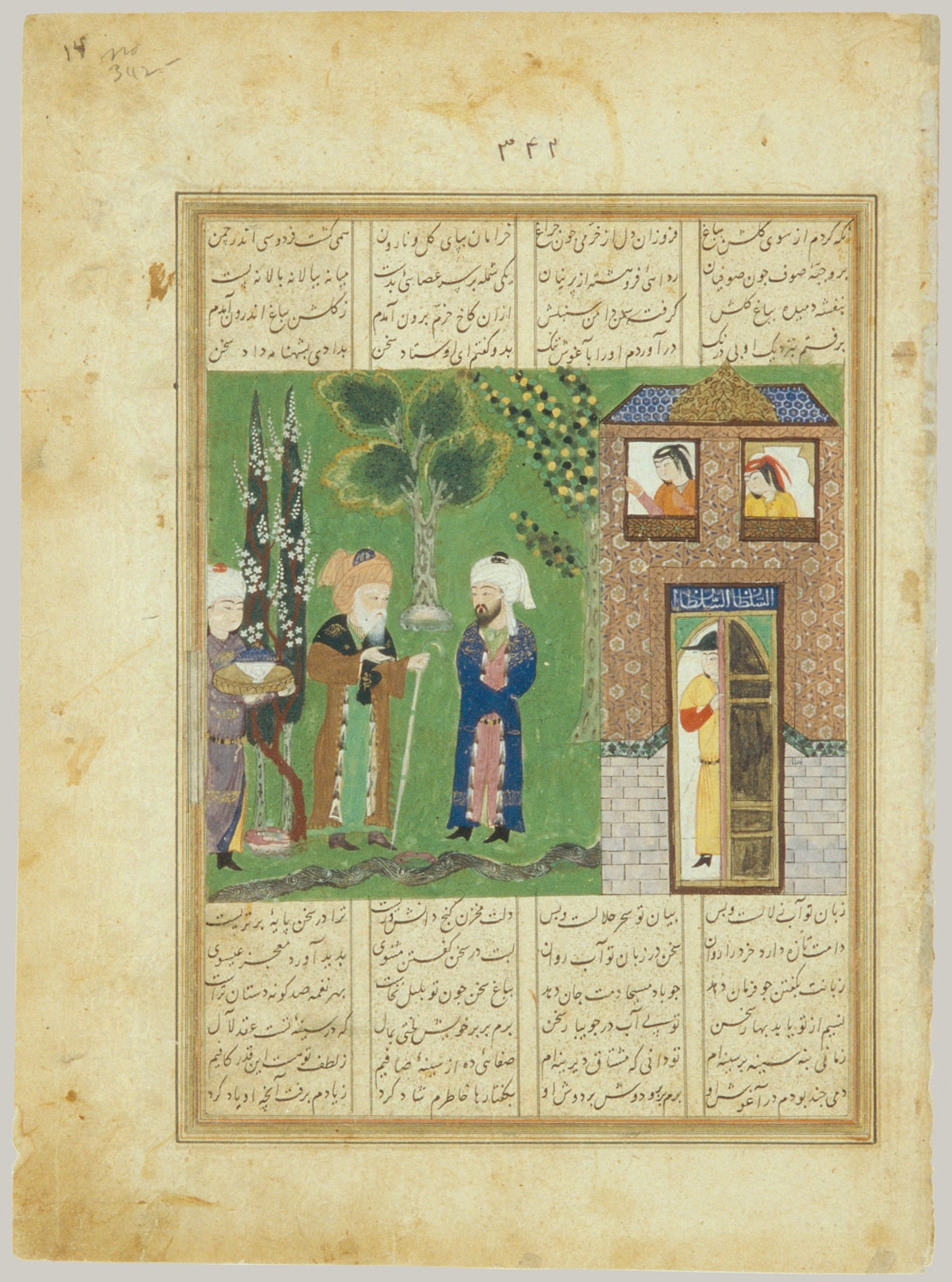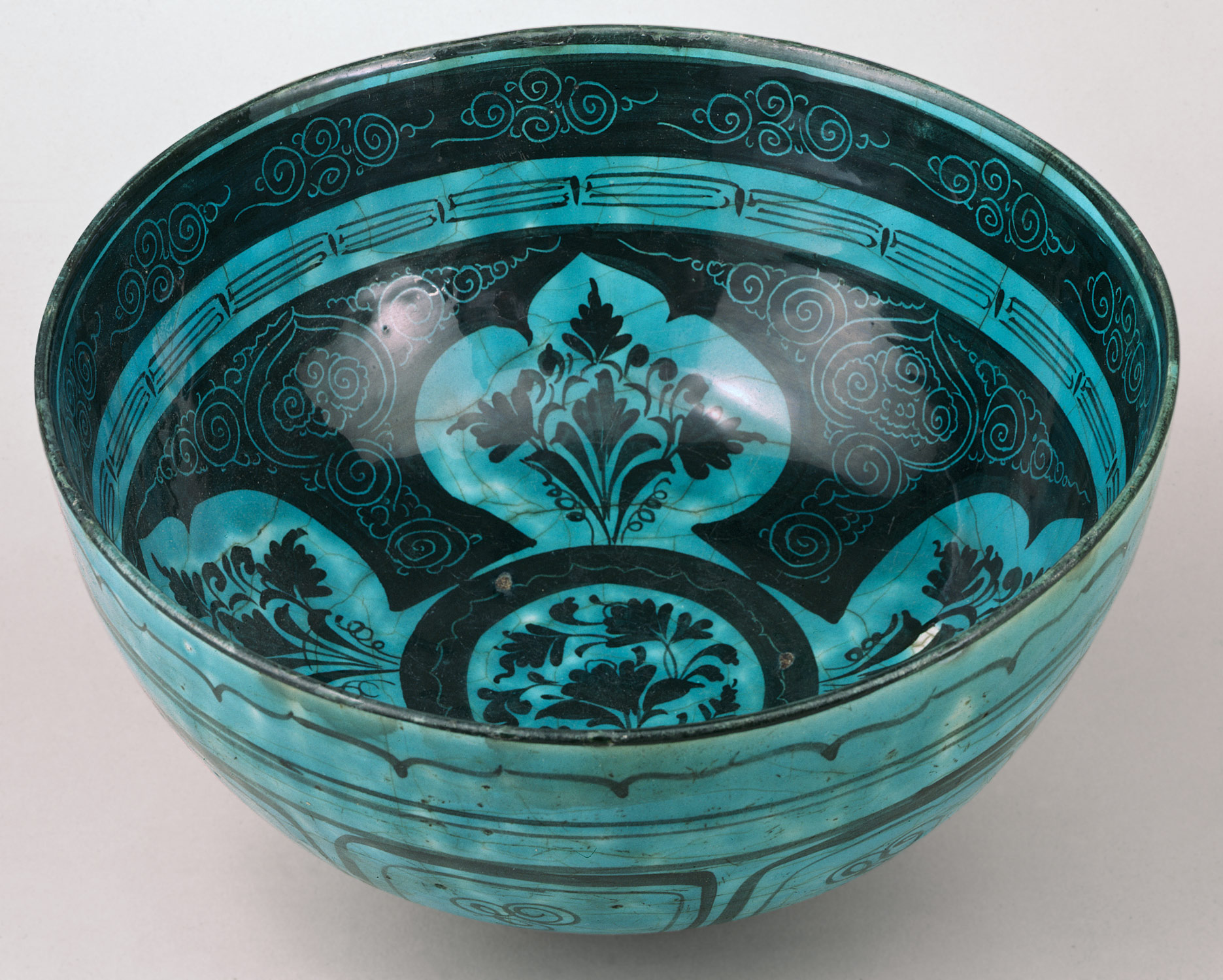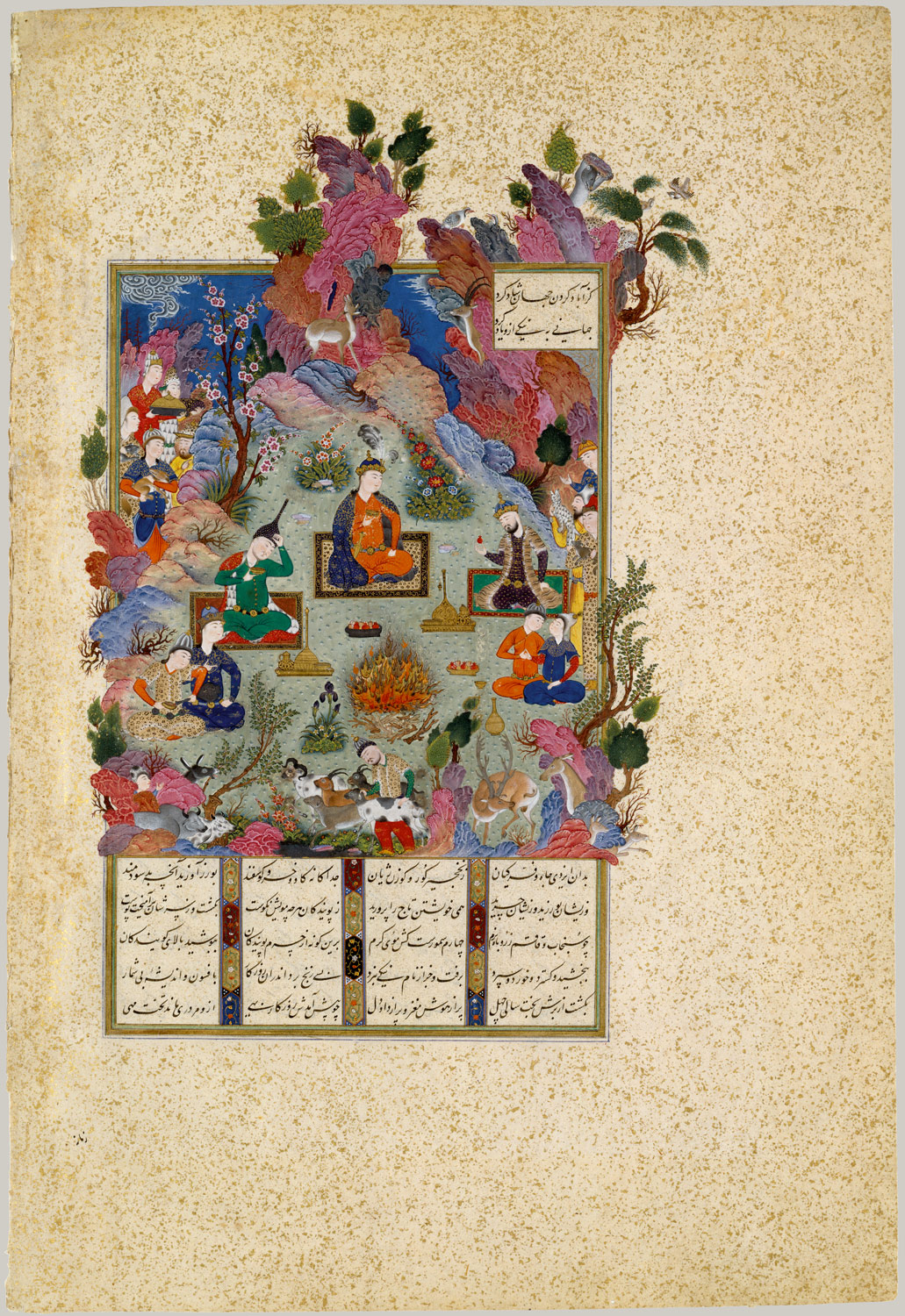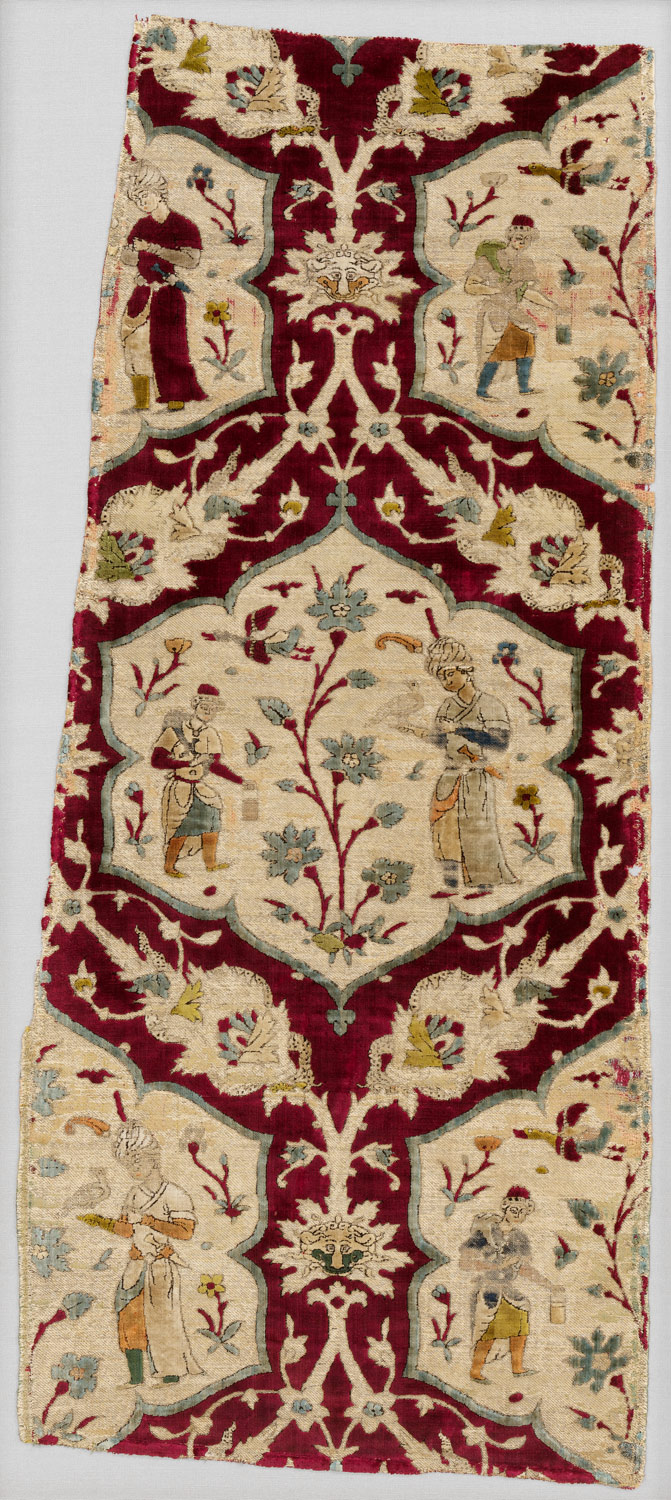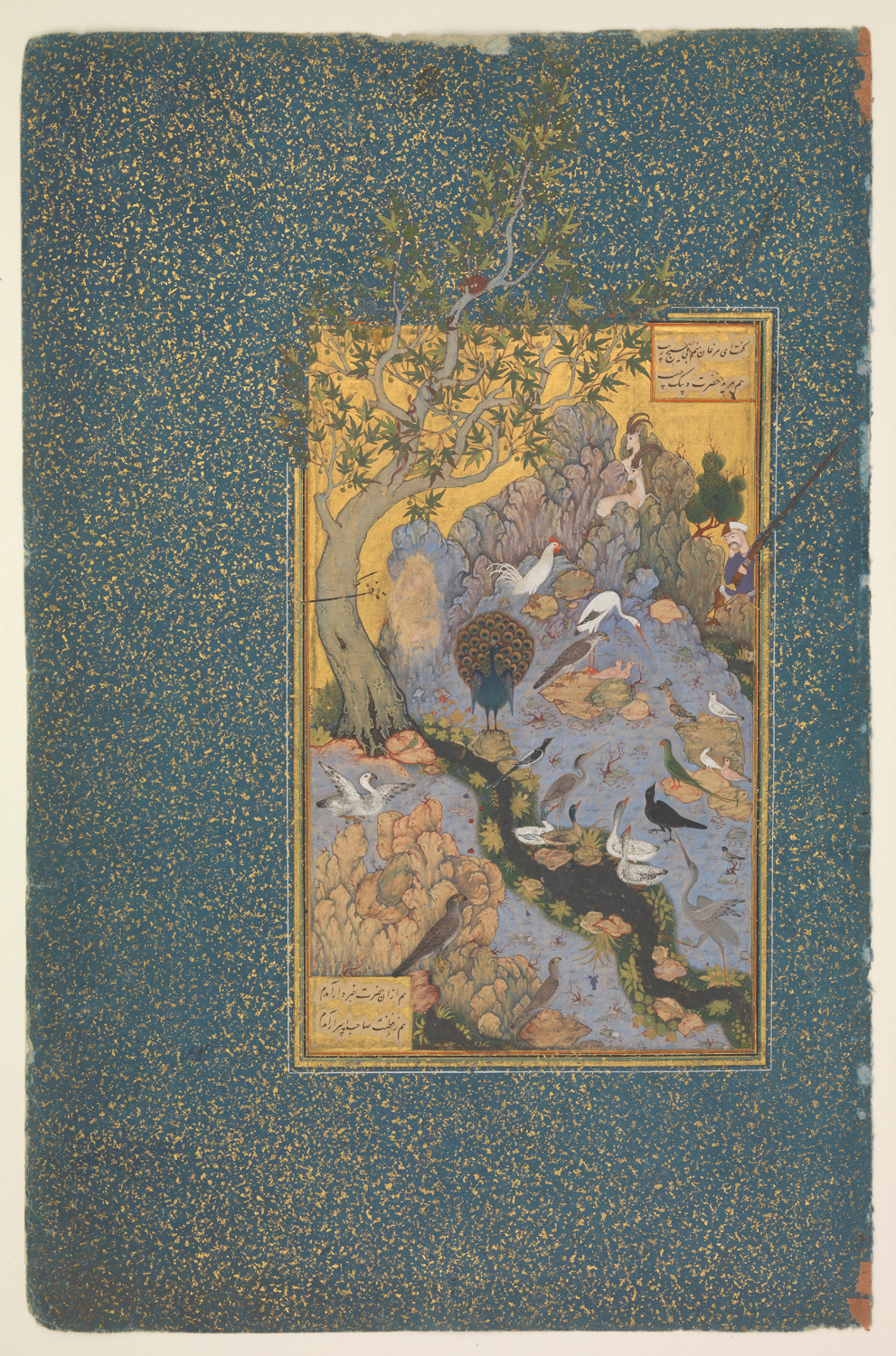In the first half of the period from 1400 to 1600 A.D., Iran is ruled by a series of different Turko-Mongol dynasties such as the Jalayirids, Timurids, Qara Quyunlu, and Aq Quyunlu. By the early sixteenth century, the whole area is unified under the rule of the Safavids, possibly the most successful dynasty to emerge from Iran in the Islamic era. The period is recognized for artistic production, particularly the arts of the book. Textiles, carpets, and ceramics also become important in the international market.
Iran, 1400–1600 A.D.
Timeline
1400 A.D.
1450 A.D.
1450 A.D.
1500 A.D.
1500 A.D.
1550 A.D.
1550 A.D.
1600 A.D.
Overview
Key Events
-
ca. 1360–1406
Under the Jalayirid dynasty (1340–1411), a Mongol family that establishes its rule over Iraq and northwestern Iran during the collapse of Ilkhanid power, art and architecture continue to follow the style set by their predecessor. The art of book illustration remains prominent during this period.
-
1389–1405
Timur (Tamerlane, r. 1370–1405), the Turko-Mongolian ruler established in Central Asia, controls most of West Asia. By bringing together craftsmen from different subjugated lands, Timur initiates one of the most brilliant and influential periods in Islamic art. Timur’s vast empire is relatively short-lived but his descendants continue to rule over Transoxiana as leading patrons of Islamic art.
-
1400–1501
The Timurids are celebrated for their patronage, especially of architecture and the arts of the book. The style set by the Timurids is emulated from Anatolia to India, creating an “international” style. Timurid rule is based first in Samarqand and later in Herat. In Iran, Timurid governors of the Fars region are active patrons. Two leading figures are Iskandar Sultan (r. 1395–99 and 1409–14) and Ibrahim Sultan (r. 1414–35), both particularly interested in manuscript painting. The latter is himself recognized as a calligrapher. During this period, an identifiable style of painting develops in Shiraz.
-
1406–1469
The Qara Quyunlu dynasty (Turk. “Black Sheep”; 1351–1469) expands into northwestern Iran, establishing Tabriz as its capital (1406). With the death of the Timurid ruler Shah Rukh in 1447, the Qara Quyunlu extend their dominion to Fars (Shiraz) and Kirman in southern and eastern Iran. The rulers of the dynasty, especially Jahanshah (r. 1439–67), the most famous Qara Quyunlu ruler, are known for their patronage of architecture and arts of the book. Architectural commissions from Jahanshah’s reign include the Darb-i Imam in Isfahan (1453–54) as well as the Blue Mosque in Tabriz (1465, originally part of a larger complex), both noted for their tile decoration.
-
1469–1508
After bringing Qara Quyunlu rule to an end, the Aq Quyunlu dynasty (Turk. “White Sheep”; 1378–1508) takes control of Iraq and northern Iran. Establishing diplomatic relations with Venice, the Aq Quyunlu become an international power. The rulers are recognized for their patronage of architecture, metalwork, and arts of the book. Few buildings remain from this period, however; known architectural commissions include the Nasriyya complex in Tabriz begun by Uzun Hasan (r. 1453–78) and enlarged by his son Ya‘qub (r. 1478–90), as well as Ya‘qub’s palace (cited in a Venetian account from 1507).
-
1501
Isma‘il Safavi and his supporters, known as Qizilbash, or “red heads,” on account of their distinctive red caps, wrest control of Azerbaijan from the Aq Quyunlu, and in the same year Isma‘il is crowned in Tabriz as the first Safavid shah (r. 1501–24). Upon his accession, Shi‘a Islam becomes the official religion of the new Safavid state, which as yet consists only of Azerbaijan. Within ten years, however, all of Iran is united under the rule of the Safavid dynasty. Though Shah Isma‘il is known to have built throughout the empire, only modest buildings survive from his reign.
-
1514
The Ottoman army wins a decisive victory over the forces of Shah Isma‘il at a battle in eastern Anatolia. The Ottomans temporarily occupy the Safavid capital at Tabriz, and in subsequent years make frequent incursions into Azerbaijan, forcing the Safavids to move their capital farther east, to the less vulnerable city of Qazvin (1555). The sixteenth century is a period of frequent Ottoman-Safavid warfare, but eventually the Ottomans are expelled from Iran and Transcaucasia.
-
1524–1576
Under Isma‘il’s son Tahmasp, the arts of the book are central in royal patronage. The shah, who had trained with masters of the painting tradition at an early age, is involved in the production of extensively illustrated manuscripts. Artists from the Qara Quyunlu, Aq Quyunlu, and Timurid court studios are brought together to form a new Safavid style of painting. In architecture, important extant buildings from Tahmasp’s rule include the ‘Ali Qapu (“Lofty Gate”) and the pavilion known as Chihil Sutun (“Forty Columns”), both in Qazvin. Significant shrines are repaired and enlarged; a large octagonal domed hall known as the Jannat Saray is added to the dynastic shrine at Ardabil (ca. 1540) and a caravanserai to the tomb of the Eighth Shi‘i Imam in Mashhad.
-
1587–1629
The reign of Shah ‘Abbas, the most distinguished of Safavid rulers and greatest patron of the arts, is recognized as a period of military and political reform as well as of cultural florescence. The reorganization of the state and the ultimate elimination of Qizilbash power, a group that continued to threaten the authority of the throne, bring stability to the empire. In his systematization of administration, ‘Abbas establishes royal workshops for textiles and carpets in different cities across Iran. As Iran is actively involved in international trade, caravanserais and bridges are built throughout the empire in order to improve communication and trade. Major shrines are restored. The art of painting continues to flourish during this period; however, instead of the manuscript format, single-page paintings and drawings become popular.
-
1597–1598
Shah ‘Abbas transfers his capital to Isfahan, in southern Iran, where he builds a new city alongside the old one. The new capital becomes ‘Abbas’ greatest architectural project. The centerpiece of his capital is the Maidan-i Shah (the Royal Square), with the magnificent Masjid-i Shah (Royal Mosque) as the focal point of the entire complex. Most significant architectural developments in Isfahan take place in the early seventeenth century.
Citation
“Iran, 1400–1600 A.D.” In Heilbrunn Timeline of Art History. New York: The Metropolitan Museum of Art, 2000–. http://www.metmuseum.org/toah/ht/?period=08®ion=wai (October 2002)
